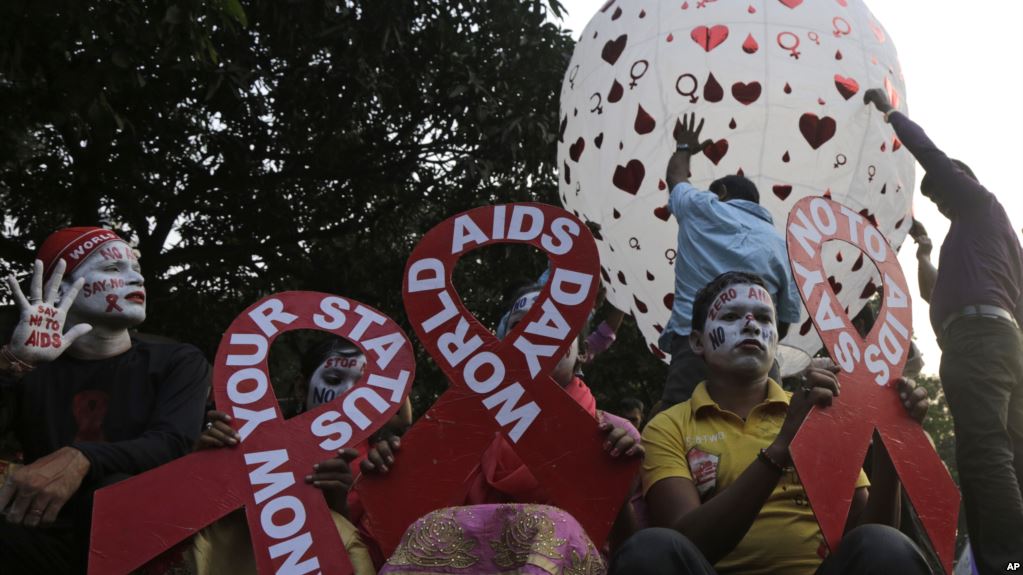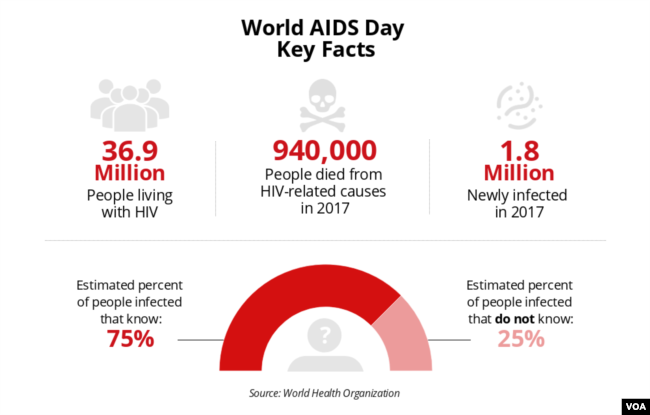By Carol Pearson/VOA News

WASHINGTON — There’s been a lot of progress in the fight against AIDS over the past 30 years, but as the 30th World AIDS Day is observed on Dec. 1 — people still die from the disease. And others are newly infected every day even though the tools are available to end the epidemic.
Fear, stigma and ignorance. The World Health Organization says these are the reasons the AIDS epidemic is not over because doctors can treat HIV, the virus that causes AIDS.
With treatment, no one needs to die from AIDS, and those with the virus can’t give it to someone else. In addition, with prevention therapy, no one needs to get infected.
Dr. Jared Baeten, an HIV specialist at the University of Washington, spoke to us via Skype and says even with these tools we’re not there yet.
“… because the ability to deliver those at the scale and with the coverage needed to be able to get HIV to go away is not nearly where it should be,” said Baeten.
Nearly a million people still die every year from AIDS. Professor Steffani Strathdee at the University of California San Diego says one of the biggest challenges is that HIV often affects people on the fringes of some societies around the world.
“There are populations all over the world that are underserved and these include injection drug users and sex workers, in particular,” Strathdee said.
It also includes men who have sex with men, transgender people, prisoners and the sexual partners of these people. Professor Strathdee says people who are hungry or need shelter are more concerned about their immediate needs than they are about HIV.
“My research and research in this field really shows you have to address the whole person and their needs in order to address HIV as one of their health concerns,” Strathdee said.
Strathdee says unless this happens, countries will have to bear the heavy social and economic costs of AIDS.
In addition, Baeten says testing and treatment have to be available to everyone.
“The biggest thing that we’ve learned for preventing HIV in the last decades is that there is no magic bullet, but when you put a whole bunch of really good things together and it has exactly the kind of impact that a magic bullet can give you,” Beaten said
Scientists say using these tools, educating people and getting more people into treatment will reduce stigma, and then, when a vaccine comes along, we can finally put an end to AIDS.

